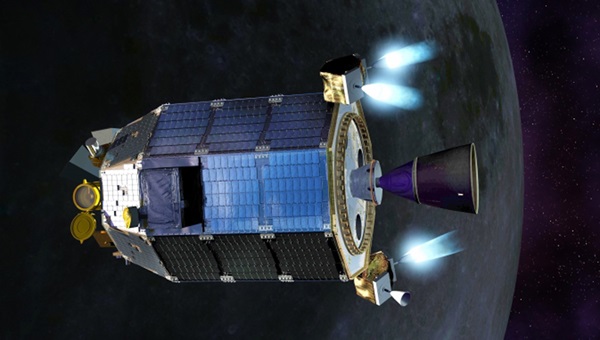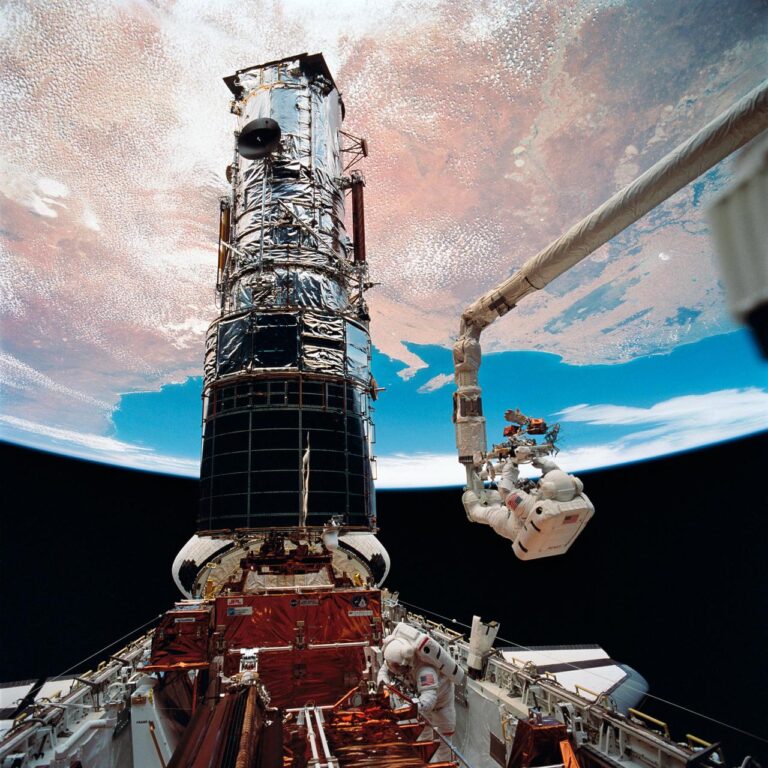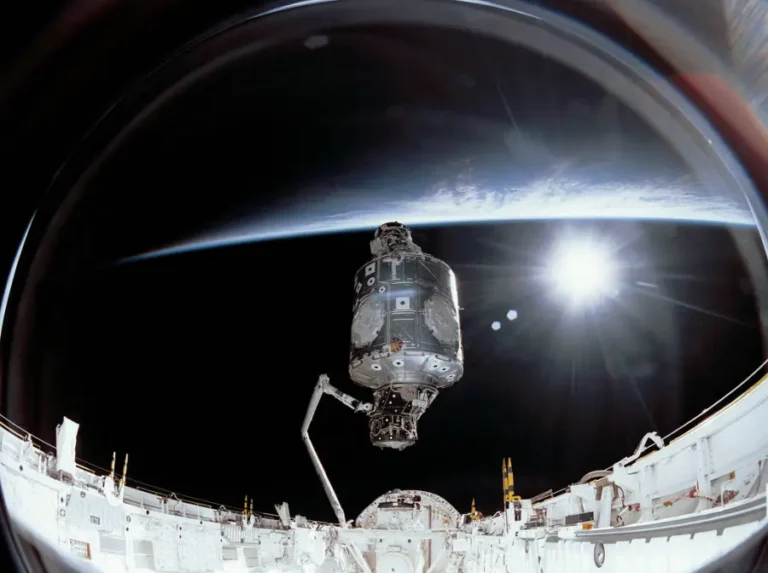Key Takeaways:
NASA’s Lunar Atmosphere and Dust Environment Explorer (LADEE) spacecraft is gradually lowering its orbital altitude to continue making science observations prior to its planned impact on the Moon’s surface on or before April 21.
Ground controllers at NASA’s Ames Research Center in Moffett Field, California, are maneuvering the spacecraft to fly approximately 1 to 2 miles (2 to 3 kilometers) above the lunar surface to gather science measurements at the lowest altitude possible.
A final maneuver will ensure LADEE’s trajectory will impact the far side of the moon, which is not in view of Earth or near any previous lunar mission landings. Ground controllers have little room for error with LADEE’s navigation system, and at these low orbital altitudes, a small error could mean the difference between continuing to orbit above the lunar surface and impacting it. Because of this, the team does not intend to target a specific impact location on the moon’s surface.
“The moon’s gravity field is so lumpy, and the terrain is so highly variable with crater ridges and valleys that frequent maneuvers are required or the LADEE spacecraft will impact the moon’s surface,” said Butler Hine, LADEE project manager at Ames. “Even if we perform all maneuvers perfectly, there’s still a chance LADEE could impact the moon sometime before April 21, which is when we expect LADEE’s orbit to naturally decay after using all the fuel onboard.”
Until mid-April, ground controllers will continue to fire the LADEE altitude control thrusters once a week to keep the observatory in its target orbit. On April 11, LADEE will perform its final orbital maintenance maneuver before the total lunar eclipse on April 15, when Earth’s shadow passes over the Moon. This eclipse, which will last approximately four hours, exposes the spacecraft to conditions at the limits of what it was designed to withstand.
“If LADEE survives the eclipse, we will have nearly a week of additional science at low altitudes before impact,” said Rick Elphic, LADEE project scientist at Ames. “For a short mission like LADEE, even a few days count for a lot — this is a very exciting time in the mission.”
After the eclipse, ground controllers will determine how well the spacecraft is functioning. If it is healthy, LADEE will continue to acquire and transmit science data, as longs as its altitude and contact with ground controllers allow.
“We’re very eager to see how LADEE handles the prolonged exposure to the intense cold of this eclipse, and we’ve used flight data to predict that most of the spacecraft should be fine,” said Hine. “However, the eclipse will really put the spacecraft design through an extreme test, especially the propulsion system.”
Launched in September 2013 from NASA’s Wallops Flight Facility on Wallops Island, Virginia, the vending-machine-sized spacecraft has been orbiting the moon since October 6. On November 10, LADEE began gathering science data, and on November 20, the spacecraft entered its science orbit around the moon’s equator. LADEE has been in extended mission operations following a highly successful 100-day primary science phase.
“Because the LADEE team has flawlessly performed every maintenance maneuver, they’ve been able to keep the spacecraft flying in its proper orbit and have enabled this amazing mission extension and science to continue up until the very end,” said Joan Salute, LADEE program executive at NASA Headquarters in Washington.
LADEE’s three science payload instruments have been working to unravel the mysteries of the Moon’s atmosphere, acquiring more than 700,000 measurements. In its previous orbit, LADEE’s closest approach to the lunar surface was between 12.5 and 31 miles (20km and 50km), and its farthest was between 47 and 93 miles (75km and 150km) – a unique position that allows the spacecraft to frequently pass from lunar day to lunar night every two hours. This vantage provides data on the full range of changes and processes occurring within the moon’s tenuous atmosphere.
Scientists hope this data will help answer a long-standing question: Was lunar dust, electrically charged by sunlight, responsible for the pre-sunrise glow detected during several Apollo missions above the lunar horizon? LADEE also is gathering detailed information about the structure and composition of the thin lunar atmosphere. A thorough understanding of these characteristics of our nearest celestial neighbor will help researchers understand other bodies in the solar system, such as large asteroids, Mercury, and the moons of outer planets.










